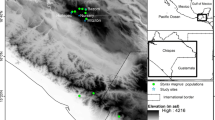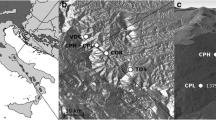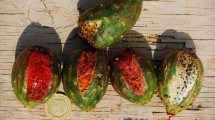Abstract
Reedbeds, which are dominated by the common reed Phragmites australis, provide one of the most important aquatic habitats in the United Kingdom, and have been identified as a priority habitat under the UK Biodiversity Action Plan. Ongoing conservation and management of reedbeds is necessary because past eradication and fragmentation have been extensive. However, there has been little consideration of the potential long-term effects that may arise if processes such as founder effects during restoration projects, or genetic bottlenecks following harvesting, are leading to reductions in genetic diversity. In this study, we used microsatellite data to compare the genetic diversity of 19 P. australis stands in the UK, and found that neither size, management, nor habitat disturbance were affecting genetic diversity. Mixed reproduction (clonal and sexual), possibly combined with gene flow across relatively small spatial scales, appears to be maintaining genetic diversity within most stands. However, most stands were highly genetically differentiated from one another, which implies low gene flow. Long-term genetic diversity in managed stands may therefore require periodic bolstering from other populations, combined with the simultaneous cultivation of multiple generations. In addition, low gene flow suggests that managers should actively introduce plants into all areas in which reedbeds are desired. In conclusion, our study shows that reedbed restoration and maintenance do not seem to be adversely affecting the population genetics of P. australis, but the importance of genetic diversity should be factored into long-term projects.



Similar content being viewed by others
References
Alvarez, M. G., F. Tron & F. Mauchamp, 2005. A sexual versus asexual colonization by Phragmites australis: 25-year reed dynamics in a Mediterranean marsh, Southern France. Wetlands 25: 639–647.
Clevering, O. A. & J. Lissner, 1999. Taxonomy, chromosome numbers, clonal diversity and population dynamics of Phragmites australis. Aquatic Botany 64: 185–208.
Coops, H. & G. Van der Velde, 1995. Seed dispersal, germination and seedling growth of six helophyte species in relation to water-level zonation. Freshwater Biology 34: 13–20.
Dorken, M. E. & C. G. Eckert, 2001. Severely reduced sexual reproduction in northern populations of a clonal plant, Decodon verticillatus (Lythraceae). Journal of Ecology 89: 339–350.
Felsenstein, J., 2005. PHYLIP (Phylogeny Inference Package) Version 3.6. Distributed by the Author. Department of Genome Sciences, University of Washington, Seattle.
Guo, W. H., R. Q. Wang, S. L. Zhou, S. P. Zhang & Z. G. Zhang, 2003. Genetic diversity and clonal structure of Phragmites australis in the Yellow River delta of China. Biochemical Systematics and Ecology 31: 1093–1109.
Hansen, D. L., C. Lambertin, A. Jampeetong & H. Brix, 2007. Clone-specific differences in Phragmites australis: effects of ploidy level and geographic origin. Aquatic Botany 86: 269–279.
Hawke, C. J. & P. V. Jose, 1996. Reedbed Use for Commercial and Wildlife Interests. RSPB Management Guides, RSPB, UK.
Holsinger, K. E. & P. O. Lewis, 2003. Hickory: a package for analysis of population genetic data v1.1. Distributed by the authors. University of Connecticut, Storrs.
Holsinger, K. E., P. O. Lewis & D. K. Dey, 2002. A Bayesian approach to inferring population structure from dominant markers. Molecular Ecology 11: 1157–1164.
Huff, D. R., R. Peakall & P. E. Smouse, 1993. RAPD variation within and among populations of outcrossing buffalograss (Buchloë dactyloides (Nutt.) Englem.). Theoretical and Applied Genetics 86: 927–934.
Kalinowski, S. T., 2005. Do polymorphic loci require large sample sizes to estimate genetic distances? Heredity 94: 33–36.
Koppitz, H., 1999. Analysis of genetic diversity among selected populations of Phragmites australis world-wide. Aquatic Botany 64: 209–221.
Koppitz, H. & H. Kühl, 2000. To the importance of genetic diversity of Phragmites australis in the development of reed stands. Wetlands Ecology and Management 8: 403–414.
Lambertini, C., M. H. G. Gustafsson, J. Frydenberg, M. Speranza & H. Brix, 2008. Genetic diversity patterns in Phragmites australis at the population, regional and continental scales. Aquatic Botany 88: 160–170.
League, M. T., E. P. Colbert, D. M. Seliskar & J. L. Gallagher, 2006. Rhizome growth dynamics of native and exotic haplotypes of Phragmites australis (common reed). Estuaries and Coasts 29: 269–276.
Mal, T. & L. Narine, 2004. The biology of Canadian weeds. 129. Phragmites australis (Cav.) Trin. ex Steud. Canadian Journal of Plant Science 84: 365–396.
McKee, J. & A. J. Richards, 1996. Variation in seed production and germinability in common reed (Phragmites australis) in Britain and France with respect to climate. New Phytologist 133: 233–243.
Nei, M., 1972. Genetic distance between populations. American Naturalist 106: 283–292.
Obbard, D. J., S. A. Harris & J. R. Pannell, 2006. Simple allelic-phenotype diversity and differentiation statistics for allopolyploids. Heredity 97: 296–303.
Peakall, R. & P. E. Smouse, 2006. GENALEX 6: genetic analysis in Excel. Population genetic software for teaching and research. Molecular Ecology Notes 6: 288–295.
Pellegrin, D. & D. P. Hauber, 1999. Isozyme variation among populations of the clonal species, Phragmites australis (Cav.) Trin. ex Steudel. Aquatic Botany 63: 241–259.
Raicu, P., S. Staicu, V. Stoian & T. Roman, 1972. The Phragmites communis Trin., chromosome complement in the Danube Delta. Hydrobiologia 39: 83–89.
Rodwell, J. S., 1995. Aquatic Communities, Swamps and Tall-Herb Fens. Cambridge University Press, Cambridge.
Saltonstall, K., 2003. Microsatellite variation within and among North American lineages of Phragmites australis. Molecular Ecology 12: 1689–1702.
UK Biodiversity Action Plan for Reedbeds. 1995. http://www.ukbap.org.uk/UKPlans.aspx?ID=19.
van der Putten, W. H., 1997. Die-back of Phragmites australis in European wetlands: an overview of the European research programme on reed die-back and progression (1993–1994). Aquatic Botany 59: 263–275.
Weir, B. S. & C. Cockerham, 1984. Estimating F-statistics for the analysis of population structure. Evolution 38: 1358–1370.
Wheeler, B. D., 1992. Integrating wildlife with commercial uses. In Ward, D. (ed.), Reedbeds for Wildlife. University of Bristol/RSPB, Sandy.
Acknowledgments
This work was supported by the Natural Sciences and Engineering Research Council of Canada (NSERC) and Trent University. Thanks to Eva Conrad for assistance with field work.
Author information
Authors and Affiliations
Corresponding author
Additional information
Handling editor: Christian Sturmbauer
Rights and permissions
About this article
Cite this article
Paul, J., Kirk, H. & Freeland, J. Genetic diversity and differentiation of fragmented reedbeds (Phragmites australis) in the United Kingdom. Hydrobiologia 665, 107–115 (2011). https://doi.org/10.1007/s10750-011-0608-5
Received:
Revised:
Accepted:
Published:
Issue Date:
DOI: https://doi.org/10.1007/s10750-011-0608-5




